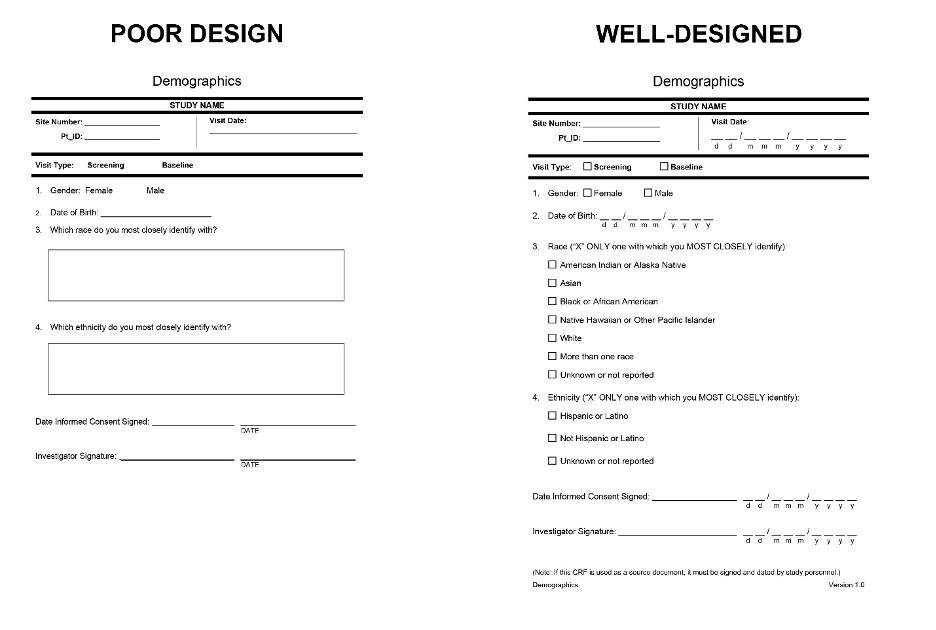clinical research case report form

In the realm of clinical research, the case report form (CRF) stands as a vital instrument, meticulously designed to capture the intricacies of a participant’s journey through a clinical trial. This structured document serves not only as a data collection tool, but also as a historical record of the research process, encapsulating valuable insights into the efficacy and safety of new treatments. As researchers strive to uncover novel interventions in health and medicine, the CRF becomes an essential component, enabling systematic analysis and regulatory compliance. By transforming raw data into informative narratives, the case report form plays a crucial role in advancing our understanding of diseases and enhancing patient care. In this article, we will explore the purpose, design, and significance of CRFs within the broader context of clinical research.
Essentials of Designing an Effective Clinical Research Case Report Form
Designing a clinical research case report form (CRF) is critical for capturing data accurately and efficiently. A well-structured CRF serves as the backbone for any clinical trial, ensuring that relevant information is recorded systematically. Essential elements of an effective CRF include clarity, completeness, and consistency. Each item on the form should be clearly defined and easy for participants to understand, reducing the likelihood of errors. Furthermore, the form must include comprehensive fields that cover all necessary data points and maintain consistency in terminology and units of measurement throughout the document.
Incorporating user-friendly design features can significantly enhance the efficacy of a CRF. This includes the use of logical grouping of related questions, drop-down menus for standardized responses, and clear guidance notes for complex items. Additionally, employing a data validation process within the CRF can help maintain accuracy and minimize data entry errors. A well-designed form also supports regulatory compliance by integrating mandatory fields and verification steps to ensure that all required information is captured before submission. Below is a sample table illustrating key components of an effective CRF:
| Component | Description |
|---|---|
| Title of Study | Clear identification of the study for effective referencing. |
| Subject Identification | Unique identifier for each participant to ensure confidentiality. |
| Data Collection Dates | Indicate the timesphere for data collection to track progress. |
| Outcome Measures | Defined endpoints necessary for the analysis of the study. |

Understanding Key Components and Best Practices
In clinical research, the case report form (CRF) serves as a vital tool that collects data essential for evaluating the safety and efficacy of new treatments. A well-designed CRF should encompass all necessary data points while ensuring clarity and ease of use for researchers and participants alike. This includes information on patient demographics, medical history, treatment protocols, and specific outcomes. When developing a CRF, it is crucial to maintain compliance with regulatory standards, thereby safeguarding participant data and integrity of the study results. Key components to consider include:
- Data Relevance: Ensure that all data collected directly pertains to the study objectives.
- Flexibility: Design forms that can accommodate various study designs and participant responses.
- Simplicity: Avoid overly complex questions to facilitate accurate data entry.
- Validation Checks: Incorporate mechanisms for real-time data validation to reduce errors.
Best practices in using CRFs also involve rigorous training for all personnel involved in data entry and management. This training should emphasize the importance of consistency and accuracy, which are critical in maintaining the integrity of the research findings. Furthermore, conducting regular audits of the CRF and data collected can help identify discrepancies early in the process, promoting timely resolutions. To streamline data management, consider integrating electronic CRFs (eCRFs) that enhance real-time collaboration and minimize data loss. Key strategies for effective CRF management include:
- Periodic Review: Regularly assess the form’s design and update as necessary.
- Participant Feedback: Collect input from participants on the usability of the CRF.
- User Training: Implement comprehensive training sessions for all research staff.
- Compliance Monitoring: Ensure adherence to ethical guidelines and regulations throughout the study.

Navigating Regulatory Compliance and Ethical Considerations
Ensuring adherence to regulatory compliance is paramount in clinical research, particularly when dealing with the creation and management of case report forms (CRFs). Organizations must navigate a complex landscape of regulations imposed by various governmental bodies, which can vary widely depending on geographical location and specific industry standards. Key considerations include understanding and implementing processes that meet requirements for data integrity, participant confidentiality, and timely reporting of findings. Regulatory compliance not only safeguards participants but also enhances the credibility of the research outcomes, fostering trust among stakeholders.
Beyond the regulatory frameworks, ethical considerations play a crucial role in clinical research. It is essential to establish clear guidelines that govern the treatment of data and respect for participants’ rights. Some fundamental ethical principles include:
- Informed Consent: Ensuring participants fully understand the study’s risks and benefits.
- Confidentiality: Maintaining the privacy of participant information.
- Integrity of Data: Upholding accuracy in reporting results to avoid misleading conclusions.
Balancing compliance with ethical standards not only fulfills legal obligations but also promotes a culture of responsibility and transparency within the research community.

Enhancing Data Quality Through Thoughtful Implementation Strategies
To elevate data quality in clinical research case report forms (CRFs), organizations should adopt multifaceted strategies designed to maximize accuracy and ensure compliance with regulatory standards. A key approach involves implementing validation checks during the data entry phase, which can markedly reduce errors by flagging inconsistencies or out-of-range values before data is finalized. Additionally, establishing comprehensive training programs for data entry personnel is crucial; these programs should encompass the importance of data integrity and familiarization with the CRF design to foster a culture of precision and accountability.
Moreover, utilizing automated data management tools can significantly streamline the process, enhancing both efficiency and oversight. By integrating these tools, researchers can benefit from features such as real-time data monitoring and intelligent analytics that identify trends and anomalies in collected data. It’s essential to also create a closed feedback loop whereby output from data analyses informs revisions in CRF design and data collection processes. This iterative approach not only strengthens the foundation of data quality but also builds trust among stakeholders by ensuring that the data is consistently fit for use in driving effective clinical decisions.
To Wrap It Up
the clinical research case report form serves as a vital bridge between raw observational data and insightful scientific conclusions. It is not merely a collection of information, but a detailed narrative that chronicles the journey of a patient’s experience within a clinical trial. As we continue to advance in the realm of medical research, the importance of well-structured and meticulously filled out case report forms cannot be overstated. They ensure that every participant’s story is accurately captured and analyzed, paving the way for future innovations in treatment and care. As researchers, clinicians, and regulators strive for excellence, the case report form stands as a testament to the commitment to precision and integrity in clinical research. Embracing this tool with diligence and care will undoubtedly enrich our understanding of human health and enhance the quality of the studies we conduct. And so, as we look ahead, let us remember that behind every data point lies a human experience, waiting to inspire the next breakthrough in medicine.




